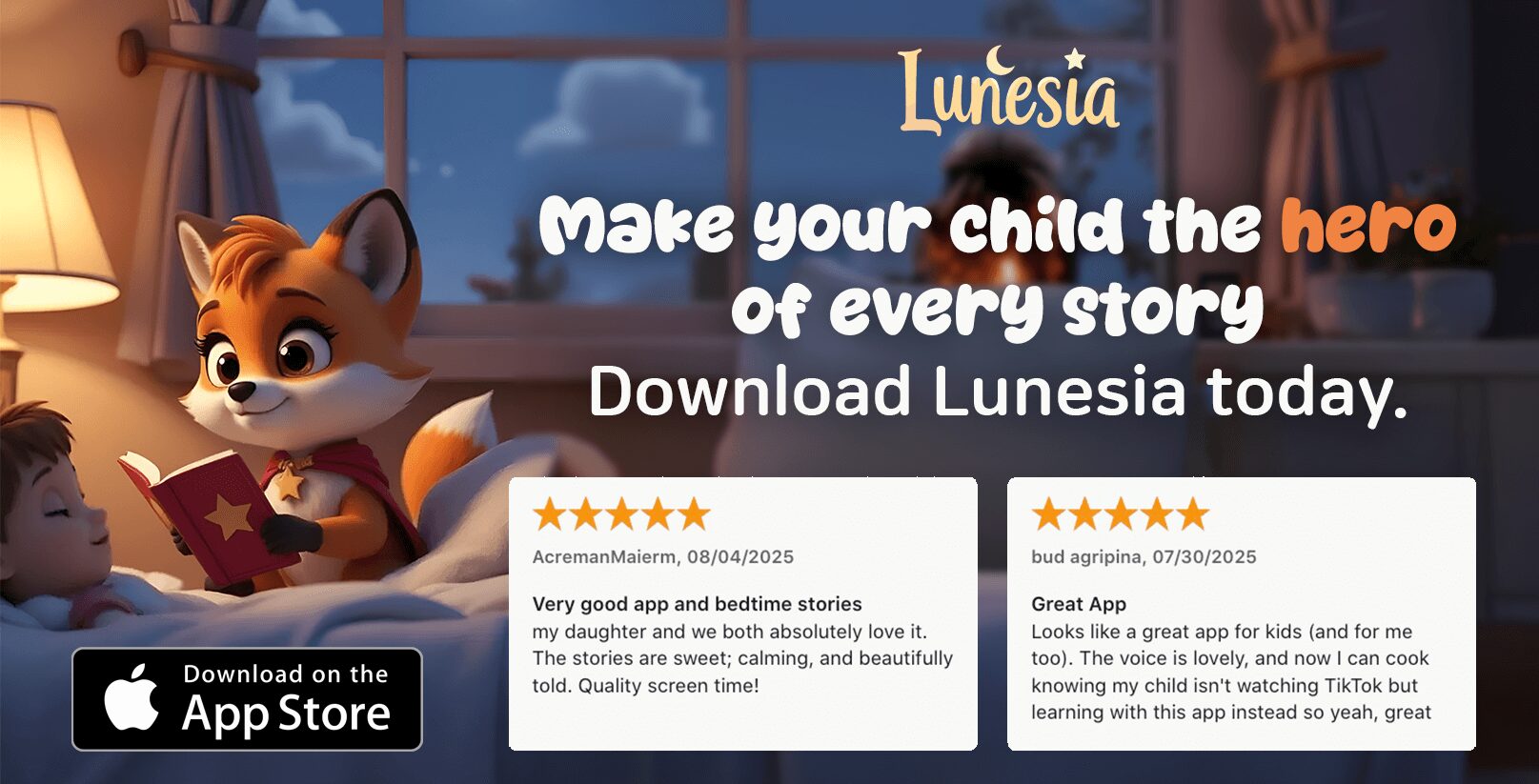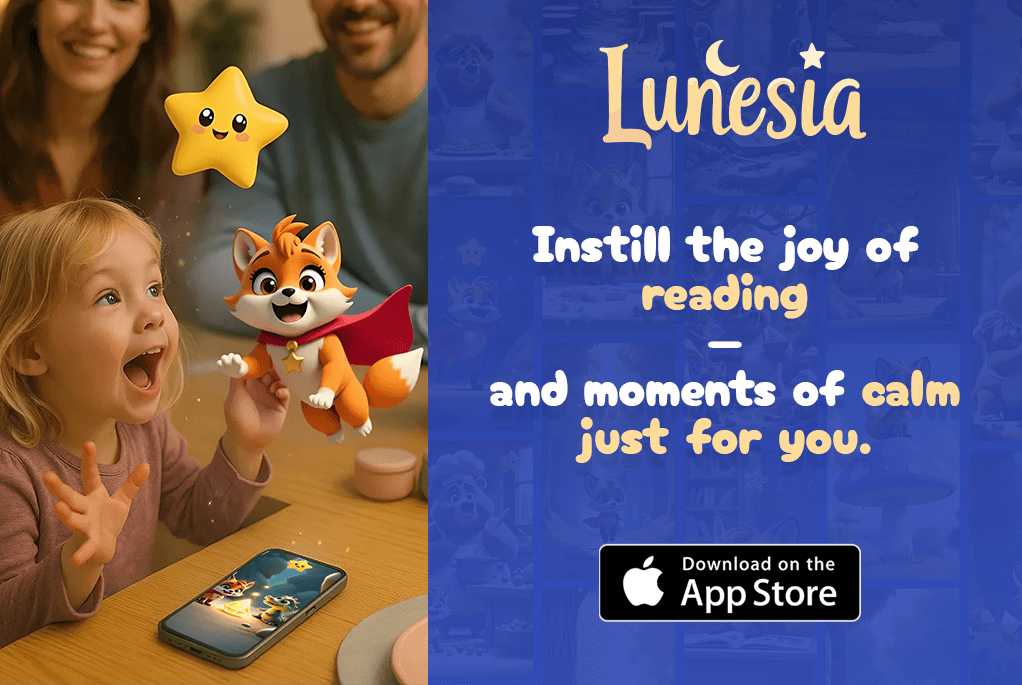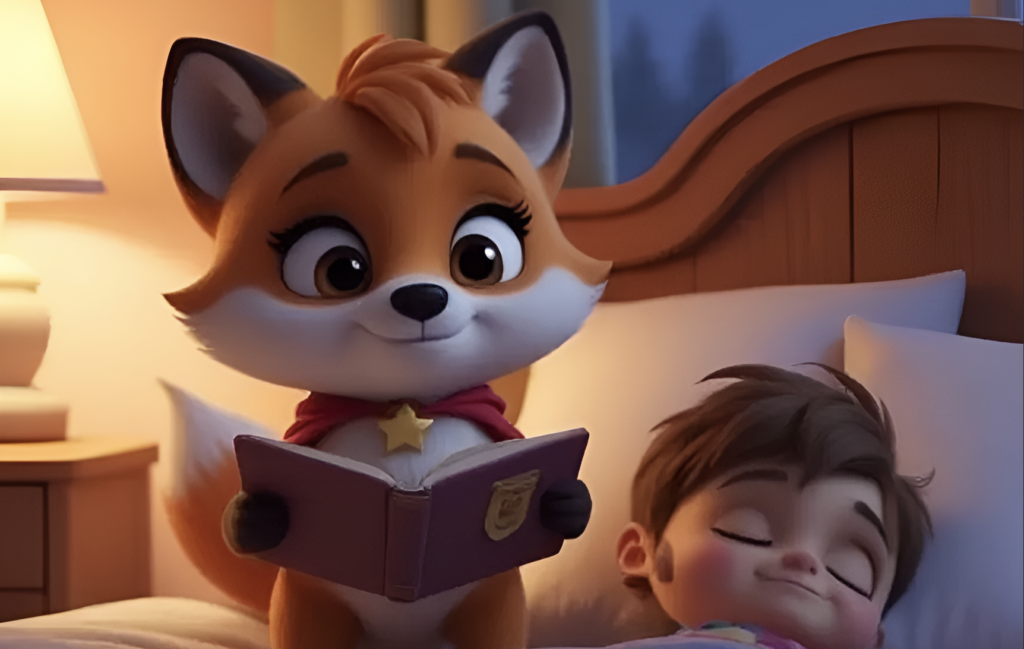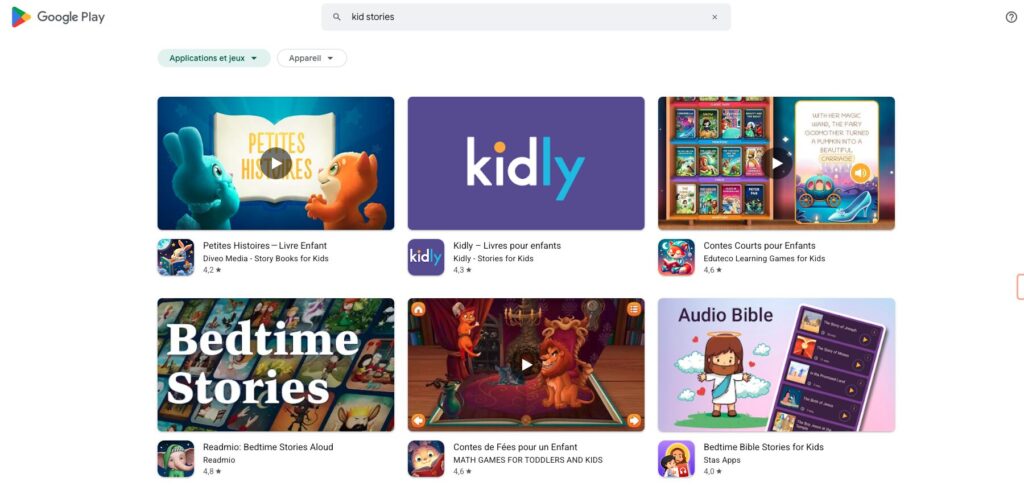Fear of abandonment in babies (also known as separation anxiety) can turn your once-smiling little one into a crying bundle of nerves whenever you step away. If you’ve been feeling helpless, trust me, I’ve been there—and there is hope! From understanding the crucial developmental stage of object permanence to trying out small daily rituals that soothe anxieties, this guide will walk you through every step. You’ll discover practical tips, relatable stories, and even how the Lunesia app can be your secret weapon to support your journey. No more second-guessing if you’re “doing it all wrong”! Embrace a more peaceful, informed approach to this normal phase of your child’s growth, and see why so many parents swear by these methods. Ready to ease those tears and find more joy with your baby?
When Baby’s Tears Tug at Your Heart: My Personal Encounter with Fear of Abandonment
I remember the first time I had to leave my baby with a caretaker—my heart pounded like a jackhammer, and I nearly canceled my plans. The moment I stepped out, he burst into tears so loud that I could still hear them down the hallway. I felt guilty, anxious, and clueless. Have you ever had that feeling in the pit of your stomach, wondering if you’re scarring your child for life just by heading to work or to the grocery store? I can totally relate.
That day, I rushed back into the room, scooped my baby up, and felt like I’d failed him. Big mistake. It took me weeks to realize I was actually reinforcing his anxiety by returning so quickly. Later, I started reading about separation anxiety—yup, that dreaded fear of abandonment—and discovered that it’s a normal developmental stage, usually peaking around 8 to 10 months. Although normal, it can still feel like your heart is being wrenched out of your chest every time your baby cries for you.
But guess what? There is a light at the end of this tearful tunnel. By understanding how your baby perceives the world, establishing some gentle routines, and even leveraging modern parenting tools like Lunesia, you can not only survive this stage but also strengthen the bond with your little one. Ready to dive into these proven strategies? Let’s do this!
Why Babies Fear Abandonment: Making Sense of Separation Anxiety
Babies don’t have the same perception of time and space that we adults do. When you disappear from their line of sight, it’s almost as if you’ve vanished forever. I learned this the hard way when my first child was around 9 months old. As soon as I’d step out of the room to grab something—just a quick dash for a diaper, I swear—he would wail like the world was ending. At first, it freaked me out. Was there something seriously wrong?
I later discovered the concept of object permanence. Before a baby develops this skill, “out of sight” literally means “gone.” So when you leave to get the laundry, your baby can’t be sure you’ll ever return. It’s a bit like you suddenly slipped into a black hole in their universe. When this realization dawned on me, I felt such compassion for his fear. Can you imagine being that tiny, thinking you’ve lost your most important person?
But here’s the good news: separation anxiety is a normal milestone marking that your baby is growing cognitively. Yes, that meltdown at daycare drop-off or the tears at bedtime can actually be a sign that your child is developing as expected. And as alarming as it can be, it usually passes after a few weeks or months. The key, as I learned, is to handle it with empathy and consistency.
Think about it: how would you feel if your closest companion walked away without a goodbye, leaving you confused and anxious? Probably not so great, right? That’s why reassuring your baby—through words, routines, and gentle touches—plays a crucial role.
But trust me, you don’t need to become a 24/7 attachment parent or give up your entire life outside your baby’s orbit. Instead, a few smart adjustments can go a long way. Keep reading for some real-life tips that helped me—and might just help you—tackle those dreaded partings like a pro.
Understanding the Different Stages of Separation Anxiety
Let’s dive a bit deeper into the phases of separation anxiety. Just like with any developmental milestone, each stage can bring its own flavor of drama and tears. Knowing these can help you keep your cool when you suspect the fear of abandonment is about to strike.
Infancy (Around 4-5 Months to 9 Months)
Around 4 or 5 months, some babies begin to realize that you’re not always within arm’s reach. But separation anxiety typically becomes more pronounced around 9 months. When I brought my baby to a family gathering at 5 months, he was fine being passed around. By 9 months? He clung to me like I was a lifesaver in a stormy sea.
During this stage, your baby might cry the second you leave the room, and bedtime might become a mini battle. A piece of advice from my experience? Keep absences short and sweet. Don’t make a big production out of leaving.
Toddlerhood (About 15 to 18 Months)
Some babies breeze through infancy with minimal tears but get hit by separation anxiety in the toddler stage. By then, they’re more mobile, more curious, but still clingy when they sense you’re about to vanish.
My second child actually went through a major meltdown phase around 15 months. I’d turn to put on my shoes, and he’d scream like someone had stolen his favorite toy. Toddlers are a handful, so be prepared for an outpouring of emotions.
Preschool Years (3 Years and Up)
By the time your child is a preschooler, they’re more verbally articulate. They might tell you not to go, or even manipulate the scenario to get you to stay. “Mommy, my tummy hurts,” or “Daddy, please don’t leave me behind!”—sound familiar?
It’s crucial here to stay consistent. If you cave in every time they plead, you risk prolonging the anxiety.
The comforting part is, for most kids, fear of abandonment eases significantly by the end of the preschool years. Consistency, love, and a calm approach will work wonders.

My Biggest Mistakes Handling Fear of Abandonment (and What I Learned)
I’d like to spill some tea here on my own missteps so you can avoid them.
Sneaking Out Without Saying Goodbye
At first, I thought, “Oh, if I just leave quietly, maybe he won’t notice, and we’ll avoid tears.” Wrong. This tactic backfired majorly. My baby’s anxiety escalated because one moment I was there and the next I was gone.
Instead, a quick but clear goodbye fosters trust.
Lingering Too Long and Getting Emotional
During daycare drop-offs, I’d sometimes linger, keep picking up my child, and shower him with kisses. But that only dragged out the emotional meltdown.
Now, I’ve learned that a short, upbeat send-off is best: “I love you, I’ll be back before snack time, have fun with your friends!”
Returning Mid-Tantrum
This was a biggie. I’d walk away and hear my child cry, then come rushing back. It reinforced the idea that crying brings Mommy back, making separation even harder next time.
Once you’ve said your goodbye, it’s better to commit, unless there’s a genuine emergency.
Feeling Overly Guilty
Look, it’s natural to feel pangs of guilt. But your baby can sense your emotions, and if you appear anxious or guilty, it might amplify their worry.
Reminding myself “I’m doing this for both our growth” helped me keep a composed demeanor.
By learning from these stumbles, I discovered that consistency, brevity, and genuine reassurance form the trifecta of smooth separations.
How Lunesia Can Support You Through These Tough Moments
You might be wondering, “Is there an app that can really help ease my baby’s separation anxiety?” Let me introduce you to Lunesia. I stumbled upon it when I was frantically searching for digital tools that could help me track my child’s mood swings, note their feeding times, and even track patterns around meltdown moments.
Personalized Routines
One of my top uses for Lunesia has been creating custom daily schedules—like feeding, nap times, and play sessions. Having a consistent routine can reduce the unpredictability that fuels separation anxiety.
Expert Tips and Community Support
The app hosts articles and videos from child psychologists and pediatricians, and there’s also a community forum. Nothing beats real-life advice from other parents who’ve been in your shoes.
Mood and Sleep Tracking
You can log when your baby gets anxious, what triggered it, and how you soothed them. Over time, you’ll see patterns that can help you tweak your approach.
Trust me, it’s like having a mini coach in your pocket, nudging you with gentle reminders, providing calming strategies, and offering reassurance that you’re on the right track. If you’re drowning in trial-and-error, Lunesia might be the life raft you need.
Key Strategies to Manage Your Baby’s Anxiety (That Saved My Sanity!)
Here’s a more structured breakdown of tactics that worked wonders for me. Try a few and see which ones resonate with your family’s unique vibe.
Establish a Consistent Goodbye Ritual
Could be a special kiss on the forehead, a “See you soon, alligator,” or a high-five. The routine signals your baby that you’re leaving, but you will come back.
Practice Short Absences
Start with one minute away, then two, and so on. Gradually, your child will learn that you always return.
Use Transitional Objects
A T-shirt that smells like you, a favorite cuddly toy, or a small blanket can give extra comfort when you’re gone.
Positive Reinforcement
When you come back, greet your child happily: “I missed you! Look at all the fun you had!” This shifts focus from the separation to the reunion.
Mind Your Own Emotions
Babies pick up on stress. Take a few deep breaths and keep calm. If you appear confident, your baby is more likely to feel secure too.
Pro Tip: If you’re planning to leave your baby with someone new (like a nanny or grandparent), set up a few meet-and-greet sessions beforehand. That way, your baby will already have a bond with the caretaker, and the fear of abandonment might be less intense.
Breaking Down the “Gentle Separation” Method
One approach that’s often recommended by pediatricians and parenting experts is something I call the Gentle Separation Method. Think of it like training wheels for your baby’s sense of security.
Brief Departures in the Same House
Start by stepping away for 30 seconds, maybe to grab something from the kitchen. Keep talking or singing so your baby knows you’re close by. Gradually extend these intervals.
Playing Peekaboo or Hide-and-Seek
Sounds silly, but peekaboo actually teaches object permanence in a fun, non-threatening way. The baby realizes “Mommy disappears but always comes back with a big smile!”
Calm Reassurance When You Return
Make sure your baby sees that you’re happy and at ease. “Hey, sweetie, I’m back! Did you have fun?” Over time, they associate your return with a positive moment, reducing anxiety.
Expand to Small Outings
Once your baby is comfortable with micro-absences, try stepping out of the house for a short walk around the block or a quick errand. And yes, tell them before you leave, even if they can’t talk back yet.
Avoid Overreacting to Tears
If your baby cries, offer comfort, but keep your tone relaxed. “I know you’re upset, but I’ll be right back.” Overdoing the sympathy can sometimes backfire.
This method, which I used religiously with my second child, helped me reduce bedtime battles significantly. And guess what? Within two weeks, my toddler was no longer sobbing whenever I left the room.
Personal Stories: Yes, Even the ‘Experts’ Mess Up!
I remember one sunny Sunday when I finally decided to attend a yoga class after months of no personal time. I was so pumped. My mom (who lives in another city) was visiting and offered to watch my baby. He was about 10 months old.
Just as I was about to walk out the door, my baby started wailing at the top of his lungs. My mom encouraged me to go, but I froze. “Maybe I shouldn’t,” I thought. “He’s so upset.” Eventually, I mustered the courage to leave, but I felt a boulder of guilt pressing down on me the entire yoga session.
When I returned, guess what? My baby was giggling and playing peekaboo with Grandma. He was fine. All that anguish—for nothing. That’s when I realized: our babies learn to adapt more quickly than we think, especially when they’re with a trusted caregiver.
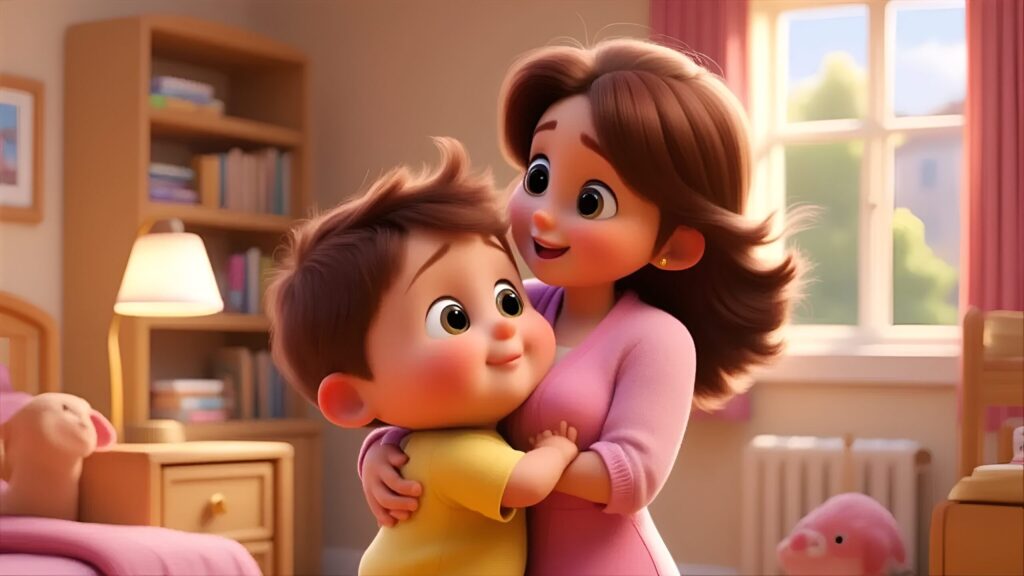
Does Separation Anxiety Ever End? Real Talk
Let’s get real: separation anxiety can flare up even after it seems to have resolved. Maybe it’s triggered by a major routine change—like moving to a new house or adjusting to a different daycare. Maybe there’s been a family shift, like a new sibling.
What I’ve observed is that children go through waves of independence and clinginess. And guess what? Adults do too. Some days we want to be super independent; other days we just crave emotional support.
So does it truly end? Mostly, yes. By the time your child is around 3 or 4, they usually have a better grasp of time and trust you’ll return. However, little relapses can happen, so keep those comfort strategies in your back pocket.
My 7-Step Tutorial to Ease Your Baby’s Fear of Abandonment
Below is a step-by-step plan that blends all the best practices I’ve come across. Feel free to tweak it for your own situation.
Prepare in Advance
Let your baby get familiar with other caregivers early on (grandparents, close friends). Use Lunesia to map out upcoming events—like your first day back at work—so you have a solid game plan.
Set a Short, Positive Goodbye Routine
Create a phrase or gesture you’ll always use, like “I’ll be back soon, my star!” Then a quick wave, and you’re off.
Cue Your Absences with Confidence
Speak calmly, maintain eye contact, and smile. If you look worried, your baby might pick up on your anxiety.
Give Them a Lovey or Transitional Object
Offer a soft toy or blanket that carries your scent. Pro tip: I used to let my baby hold my scarf for added comfort.
Keep Track of Their Reactions
Log meltdown times in Lunesia or a diary. Notice patterns—maybe your baby’s more anxious before naps or when hungry. Adjust accordingly.
Praise Independence
When you return, focus on the good stuff: “Wow, you played so well while I was gone!” This helps them feel proud and secure.
Reflect and Tweak
After each separation, take a moment to reflect. Did your baby cry less? Are certain times of day easier? Keep refining your strategy.
Comparison of Different Support Options
Sometimes, you may wonder whether you should rely on family members, daycare centers, a nanny, or an app like Lunesia for support. Here’s a quick breakdown in a simple table:
| Support Option | Advantages | Challenges |
|---|---|---|
| Family Members | Familiar, loving environment; often free or low-cost | May have scheduling conflicts or differing parenting styles |
| Daycare Centers | Social interaction, structured routine, professional caregivers | Higher cost, less one-on-one attention, can increase exposure to illness |
| Nanny | Personalized care, flexible hours, child stays at home | Expensive, requires careful vetting and trust |
| Lunesia App | 24/7 resource for tips, routine planning, community support | Requires a smartphone/tablet; some features may need premium upgrade |
In my experience, a combination is often best. For instance, you could rely on a loving grandparent a few days a week, use daycare for socialization, and also track your child’s progress with Lunesia to keep everything organized.
Motivational Pep Talk: You’ve Got This!
Whenever you’re feeling overwhelmed, remember that this stage is temporary. Your baby’s meltdown doesn’t mean you’re a bad parent—it actually means your child trusts and loves you enough to protest your departure. A baby who couldn’t care less might be cause for greater concern, ironically.
A wise pediatrician once told me, “A child’s tears are not a reflection of your parenting but rather their healthy emotional attachment.” That statement changed my outlook. It’s the same reason I’m telling you: don’t be too hard on yourself. This is a shared human experience.
Still Worried? Here’s Where to Look for More Help
- American Academy of Pediatrics (AAP): Their website is loaded with research-backed articles.
- Zero to Three: A reputable organization offering tips on child development.
- Daylily Paris: If you’re looking for clean, sensory, and effective skincare products (especially if you’re pregnant or breastfeeding), Daylily Paris is beloved by many parents. While they specialize in skincare, their blog also offers interesting perspectives on motherhood and baby care.
- Local Parenting Groups: Sometimes, sharing experiences in person or online with local parents can give you fresh ideas and moral support.
Empathy, Consistency, and the Right Tools: Your Recipe for Success
We’ve covered a lot, from the emotional rollercoaster of separation anxiety to specific strategies like the Gentle Separation Method. Whether you’re a brand-new parent or have gone through this stage multiple times, consistency, empathy, and good resources (like Lunesia) can make all the difference.
You’ve learned about object permanence, how to handle your own guilt, and how to establish goodbye rituals. Maybe you even picked up on my big “no-no” mistakes, like sneaking out without saying goodbye or rushing back at the first sound of crying. Now you know better, and you can do better.
Your baby’s fear of abandonment will subside. In the meantime, keep focusing on nurturing trust, sharing love, and offering a consistent routine. When you come out on the other side, you’ll realize that these challenges helped shape a deep, loving bond. Hang in there—you’ve got this!
FAQ
What if my baby cries endlessly every time I leave?
First, remember that a certain amount of crying is normal. Try to keep goodbyes short and focus on positive reinforcement when you return. If the crying continues for an unusually long time (say, 30 minutes or more) and it’s a daily occurrence, speak with your pediatrician. They can rule out any underlying issues and possibly refer you to a child psychologist for additional strategies.
Can separation anxiety start earlier than 8 months?
Absolutely. Some babies show signs around 4 to 5 months, though it tends to be milder. You might notice they’re more aware of your presence or absence. That’s why brief, positive departures and simple games like peekaboo can still help at this younger stage.
How do I use Lunesia for separation anxiety specifically?
Lunesia’s scheduling feature can help you create consistent routines, reducing unpredictability that can fuel anxiety. Log your baby’s behavior—note times of day they’re most anxious, how long it lasts, and what soothes them. Over time, patterns emerge, letting you refine your approach. You can also consult the in-app community or expert articles for extra support.
Is it okay to co-sleep during this phase to reduce anxiety?
Co-sleeping is a personal choice and can sometimes offer comfort to an anxious child. However, it’s essential to follow safe sleeping guidelines. If it works for your family, it can be a temporary solution, but be mindful that transitioning to independent sleep might be challenging later if co-sleeping continues for too long.
My child seems more anxious with certain caregivers. What should I do?
Sometimes, babies or toddlers have a preference for particular individuals. It may be because of the caregiver’s tone of voice, approach, or even how they hold the child. If you see that the anxiety is severe, arrange more bonding time between your child and that caregiver. Let them interact in a comfortable setting—like reading books together or singing songs—while you remain present initially. Gradual familiarity often eases the anxiety.
Should I always comfort my baby when they cry, or is it better to let them self-soothe?
Striking a balance is key. Babies benefit from knowing you’re there to respond to their distress. Comfort them briefly, reassure them, but avoid prolonged or overly dramatic displays. Gradually, they’ll learn that they can handle short separations and self-soothe for brief moments.
Can daycare help reduce separation anxiety in the long run?
Yes, daycare exposes your child to social interactions and establishes a routine. In the short term, drop-offs might be tearful, but over time, many children adapt well and even look forward to seeing friends and engaging in activities. Consistency in your approach (quick goodbyes, clear reassurance) is crucial.
What if separation anxiety persists past preschool age?
While it’s normal to see occasional clinginess in older children, daily, intense separation anxiety beyond preschool could warrant professional advice. Consult your pediatrician or a child psychologist to identify any underlying issues such as generalized anxiety or big life changes causing stress.
Is fear of abandonment related to how I felt during pregnancy?
While a parent’s stress level and emotional well-being can influence the baby’s temperament, it doesn’t directly cause separation anxiety. Babies go through this developmental stage regardless. That said, if you had high stress or anxiety during pregnancy, it’s always good to practice self-care now, seek professional support if needed, and focus on bonding and consistent routines.
Do I need any special toys or gadgets to help with separation anxiety?
Fancy gadgets aren’t a must. Sometimes a simple piece of your clothing, a warm blanket, or a familiar stuffed animal can do wonders. Apps like Lunesia can provide structure and community support, but physical gadgets are usually optional.
I hope this extensive guide helps you navigate (and maybe even embrace) the separation-anxiety phase. It might be a roller coaster, but every twist and turn brings you closer to understanding your baby’s needs—and to fostering a resilient, trusting bond that will last a lifetime. Keep going, and remember: You’re not alone, and this too shall pass! And if you ever need a digital companion on this journey, don’t forget to check out Lunesia. Sometimes, the best help is just a tap away. Good luck, and cheers to calmer days ahead!

